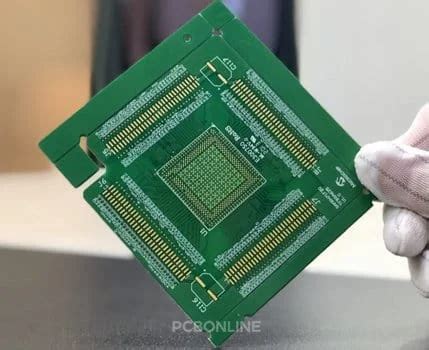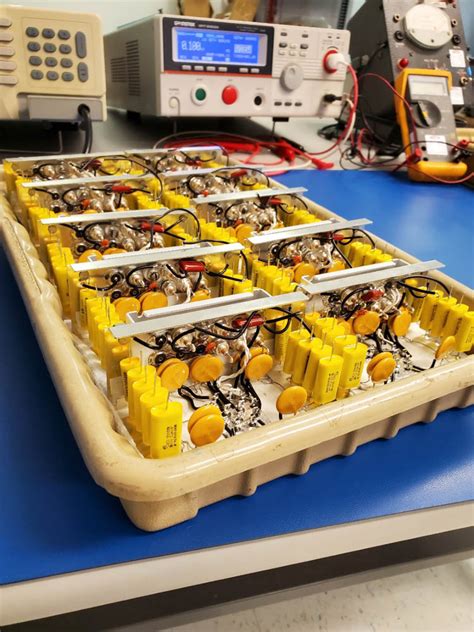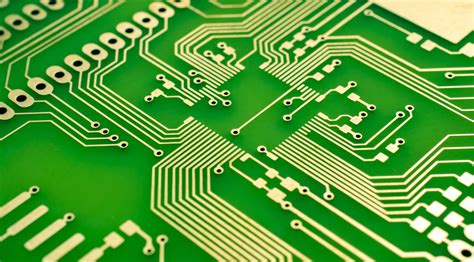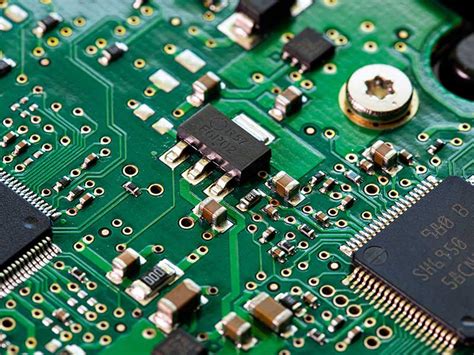Mastering BGA PCB Assembly: Innovations for Precision Electronics
Key Takeaways
Mastering BGA PCB assembly is essential for enhancing the production quality and efficiency of modern electronics. One of the key insights from recent advancements in pcb assembly technology is the importance of understanding BGA technology itself. This foundation allows professionals to effectively employ innovative soldering techniques that significantly improve both alignment and adhesion during the assembly process. The introduction of precision tools specifically designed for PCBA has transformed efficiency measures, ensuring that components are accurately placed and securely soldered. Furthermore, maintaining rigorous quality control measures during BGA PCB manufacturing is paramount, as it directly influences product reliability. Industry professionals must also be aware of common challenges such as thermal management and component placement, which can often lead to costly rework if not addressed properly. By adopting best practices and staying informed about emerging trends in BGA assembly, manufacturers can overcome these challenges and optimize their production processes, ultimately leading to better, more efficient outcomes in their electronic products.
Understanding BGA Technology: A Foundation for Assembly
Ball Grid Array (BGA) technology has emerged as a crucial element in the field of pcb assembly. Unlike traditional packaging methods, BGA components feature solder balls arranged in a grid pattern on the underside of the device. This configuration allows for a greater number of connections to be made in a smaller footprint, resulting in improved electrical performance and thermal management—both vital factors in modern electronic devices.
In the realm of pcba, the integration of BGA technology has revolutionized assembly processes. The ability to connect multiple pins with minimal physical space means that manufacturers can create more compact designs without sacrificing functionality. As such, understanding the intricacies of BGA assembly can offer valuable insights into optimizing production efficiency and product reliability.
To illustrate, let’s consider a comparison between traditional surface mount devices (SMD) and BGA components:
| Feature | SMD | BGA |
|---|---|---|
| Connection Type | Pin-through-hole | Solder balls |
| Surface Area | Larger | Smaller |
| Heat Dissipation | Moderate | Enhanced |
| Assembly Complexity | Lower | Higher |
As seen in the table, while BGA components require more sophisticated handling techniques during pcba, their benefits—particularly in terms of space savings and performance—make them indispensable for many cutting-edge applications. Furthermore, advancements in tools and techniques are continuously evolving to address the unique challenges associated with BGA assembly, highlighting the importance of staying informed about these developments for any professional in the electronics manufacturing domain. Integrating such knowledge allows for better preparation and execution during production, ultimately contributing to elevated product quality and customer satisfaction.
Innovations in Soldering Techniques for BGA PCB Assembly
In recent years, significant innovations in soldering techniques for BGA PCB assembly have emerged, enhancing both the precision and reliability of the assembly process. One notable advancement is the adoption of reflow soldering technology, which allows for optimal heat distribution across the board, ensuring that each ball grid array is soldered with consistent quality. Enhanced techniques, such as selective soldering and laser-assisted soldering, have also surfaced as effective methods for decreasing thermal stress on sensitive components while maintaining high accuracy during the pcba process.
Moreover, the integration of automation technology has revolutionized solder paste application, ensuring that the correct amount of paste is dispensed accurately each time. This innovation not only minimizes waste but also significantly boosts the reliability of signal integrity and electrical connections critical in BGA PCB assembly. As manufacturers continue to refine these methods, challenges associated with thermal cycling and micro-cracking are being addressed more effectively.
The role of precision tools, such as automated optical inspection systems and advanced thermal profiling equipment, cannot be overlooked. These tools provide real-time feedback that enhances quality control across all stages of pcba, allowing for proactive detection of potential issues before they escalate into costly mistakes. Ultimately, these cutting-edge soldering techniques are instrumental in driving efficiency and accuracy in BGA PCB assembly processes, ensuring that products meet stringent reliability standards as electronic devices continue to evolve.
Precision Tools That Transform BGA Assembly Efficiency
In the realm of BGA PCB assembly, the integration of advanced precision tools has revolutionized the efficiency of the pcba process. These tools are designed to deliver remarkable accuracy in the alignment and soldering of complex ball grid array components. For example, modern automated imaging systems enable operators to achieve pinpoint precision during assembly, drastically reducing the risks of misalignment that can lead to costly defects. Additionally, innovations such as laser-based soldering techniques provide superior control over temperature and solder flow, which is crucial for maintaining the integrity of sensitive electronic components. The introduction of smart software solutions further enhances this process by providing real-time data analytics and feedback, enabling manufacturers to quickly address potential bottlenecks. Together, these advanced tools not only minimize waste but also contribute to a more streamlined workflow in BGA assembly, making them indispensable in today’s fast-paced electronics manufacturing environment.
Quality Control Measures in BGA PCB Manufacturing
Ensuring the highest standards in BGA PCB assembly involves rigorous quality control measures that address various facets of the manufacturing process. From the initial design phase through to final inspection, each stage requires careful attention to detail. Implementing standardized procedures helps maintain consistency, while advanced testing technologies play a crucial role in identifying potential defects early on. Techniques such as Automated Optical Inspection (AOI) and X-ray inspection are increasingly used to verify solder integrity and alignment of BGA components.
Moreover, following a structured workflow ensures that every aspect of the pcba meets predefined specifications. “Prevention is better than cure,” is a useful mantra for professionals aiming to avoid costly rework or production delays by catching errors at the source. Regular training sessions for personnel on best practices in quality control are essential in fostering a culture of excellence.
Furthermore, real-time monitoring systems can provide valuable insights into production metrics, enabling quicker responses to emerging issues. Embracing these innovations not only enhances productivity but also significantly elevates the quality of the final product, reinforcing customer satisfaction and trust in the pcb assembly process. By integrating these comprehensive quality control measures, manufacturers can achieve higher efficiency levels while adhering to the exacting standards necessary for modern electronics.
Common Challenges and Solutions in BGA Assembly Processes
In the realm of BGA PCB assembly, several challenges can impede the efficiency and quality of the manufacturing process. One prominent issue is temperature control during soldering. Insufficient or uneven heating can lead to cold solder joints or component damage, adversely affecting the overall reliability of the pcba. To overcome this, manufacturers are increasingly adopting advanced soldering techniques that incorporate precision thermal profiling systems, allowing for optimized heating cycles tailored to different materials.
Another challenge is aligned to the design intricacies of BGA packages, where fine pitch and numerous pins necessitate meticulous placement accuracy. Automated assembly machines equipped with high-resolution vision systems have emerged as effective solutions, capable of detecting misalignments in real-time and ensuring proper component placement.
Furthermore, ensuring reliable electrical connections is essential. This often hinges on achieving optimal solder volume during assembly. Utilizing automated dispensing systems helps maintain consistent application of solder paste, which significantly enhances joint integrity while minimizing defects in the final pcb assembly.
Lastly, efficient debugging processes can be problematic due to limited access to BGA components. New innovations in testing techniques, such as X-ray inspection and advanced probing solutions, are providing robust avenues for diagnosing issues early in production. By implementing these innovations and addressing these challenges head-on, industry professionals can significantly enhance both the efficiency and quality of BGA PCB assembly operations.
The Future of BGA PCB Assembly: Trends and Predictions
As the world of pcb assembly continues to evolve, the future of BGA PCB assembly shows promising advancements that harness the power of technology and innovation. Emerging trends indicate a significant push towards automation and smart manufacturing processes, which stand to enhance both efficiency and accuracy in pcba production. One notable trend is the integration of artificial intelligence and machine learning, facilitating predictive maintenance and real-time monitoring during the BGA assembly process. This integration not only reduces downtime but also ensures optimal performance.
Moreover, advancements in soldering materials—such as lead-free and low-temperature solders—promise improved reliability in solder joints, addressing common challenges associated with thermal stress during assembly. The shift towards miniaturization in electronic components compels manufacturers to adopt more sophisticated techniques, such as advanced imaging systems for precise alignment during assembly. It’s clear that increased focus on sustainability will direct future BGA PCB assembly strategies, emphasizing eco-friendly materials and processes.
In summary, as industry professionals adapt to these shifts, ongoing education around these emerging technologies will play a crucial role in maintaining high standards of quality in pcb assembly processes. Through collaboration and continuous innovation, the landscape for pcba will evolve, setting new benchmarks for precision electronics manufacturing.
Case Studies: Success Stories in BGA PCB Innovations
In the realm of BGA PCB assembly, numerous case studies have emerged showcasing innovative solutions and practices that significantly improve outcomes in pcba processes. One notable example can be found in the automotive industry, where a leading manufacturer adopted advanced soldering techniques specifically designed for BGA components. This shift not only increased production speed but also enhanced reliability, as the new process minimized solder joint defects. Similarly, another technology firm implemented precision automated tools that drastically reduced the time required for assembly and testing phases of their pcb assembly operations. The results were remarkable—defect rates dropped significantly, leading to a reduction in overall costs while maintaining high-quality standards. These success stories highlight the importance of embracing cutting-edge innovations in the field of BGA PCB assembly, demonstrating how effective practices can transform traditional workflows and pave the way for more efficient manufacturing processes. As industry professionals explore these advancements, greater efficiency and accuracy in pcba become attainable targets for organizations aiming to maintain a competitive edge.
Best Practices for Training in BGA Assembly Techniques
Effective training in BGA assembly techniques is crucial for ensuring the success of any pcb assembly process. Both theoretical knowledge and practical skills must be emphasized to equip professionals with the expertise needed to navigate complex assembly challenges. Training programs should incorporate hands-on experiences, allowing participants to work with actual pcb assembly components, thereby consolidating their learning through direct application. Utilizing a blend of traditional methods, such as workshops and seminars, alongside modern tools like virtual simulations and interactive modules can enhance engagement and retention.
Moreover, fostering a culture of continuous learning is essential in an industry characterized by rapid advancements. Keeping abreast of new innovations in soldering techniques and precision tools is imperative for any professional involved in pcba processes. Regular updates to training materials should reflect these innovations, ensuring that teams are not only skilled in current methods but also adaptable to future developments. By establishing a comprehensive training framework that embraces both foundational knowledge and cutting-edge practices, organizations can enhance the efficiency and accuracy of their BGA assembly operations, paving the way for superior quality control in the electronic manufacturing landscape.
Conclusion
In summary, mastering BGA PCB assembly offers a pathway to unprecedented precision and efficiency in electronic manufacturing. The advancements in techniques and tools have redefined the landscape of pcba processes, enabling manufacturers to achieve higher accuracy and reliability. By investing in innovative soldering techniques, industry professionals can significantly enhance the overall performance of their pcb assembly processes. Furthermore, the introduction of sophisticated precision tools contributes to reducing errors, ensuring that even the tiniest components are assembled with utmost care. As the industry continues to evolve, staying updated with these innovations not only positions manufacturers to tackle future challenges but also empowers them to leverage best practices that streamline production workflows. Embracing these changes ensures sustained success in a rapidly moving technological environment where precision is paramount.
FAQs
What is BGA PCB assembly?
BGA PCB assembly refers to the process of integrating Ball Grid Array components onto printed circuit boards (PCBs). This technique promotes a compact design and high performance in electronic devices.
Why is precision important in BGA assembly?
Precision is crucial in BGA assembly because it affects the overall efficacy of the PCBA. Minor discrepancies in placement can lead to improper connections and ultimately, device failure.
What are some innovative techniques in BGA PCB assembly?
Recent advancements include advanced soldering techniques, such as reflow and wave soldering, allowing for enhanced accuracy. Techniques like automated optical inspection are also employed to ensure quality throughout the process.
What tools enhance BGA PCB assembly efficiency?
Various precision tools, such as stencil printers for solder paste application, automated pick-and-place machines, and laser cutters, significantly streamline pcb assembly processes, improving overall efficiency and accuracy.
What common challenges do manufacturers face with BGA components?
Common challenges include solder joint reliability, thermal management, and accurate component placement. Addressing these issues through technique refinement and quality control can mitigate potential problems in the assembly line.
How can quality be controlled during the BGA manufacturing process?
Implementing rigorous testing protocols such as x-ray inspection for solder joint integrity helps maintain high standards in pcba. Regular audits and process optimizations also contribute significantly to quality assurance.
For more information about effective pcb assembly solutions, please visit our site: please click here.







